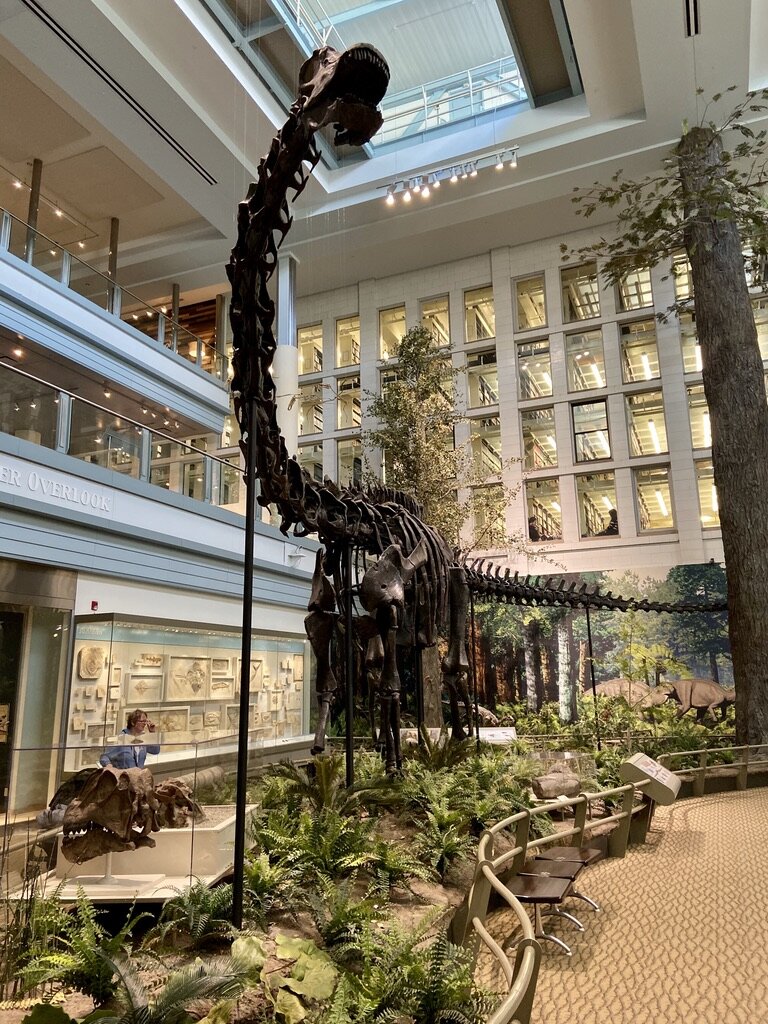For most dinosaur lovers around the country, ‘Dippy’ the Diplodocus, housed for many years at the Natural History Museum in London, is a well-known icon. Its grand unveiling took place 115 years ago today (12th May 1905), and Andrew Carnegie was the guest of honour.
Image: The presentation of the Diplodocus cast in London (Lord Avebury speaking) on 12 May 1905. (ACBM 1972/14)
Image: The real Diplodocus carnegii fossil skeleton can be seen at the Carnegie Museum of Natural History in Pittsburgh, USA.
Dippy’s story started in 1898, over 3000 miles away in the USA when news of the discovery of parts of a gigantic dinosaur skeleton by railroad engineer, William H. Reed, reached Andrew Carnegie who was on the lookout for a spectacular star exhibit for his new Natural History Museum in Pittsburgh.
In 1899, financed by Andrew Carnegie, the Director of the Carnegie Museum of Pittsburgh William J. Holland organised the museum’s first dinosaur expedition to Wyoming. On 4 July, after many weeks of disappointment, the first Diplodocus bones were found.
Investigation of the discoveries fell to palaeontologist Dr John Bell Hatcher who produced a beautifully illustrated scientific paper and set about making a complete reconstruction of the dinosaur, using other skeletons as a guide for the missing pieces (the skull, parts of the limbs and a section of the tail). His studies revealed enough differences from previous finds to recognise this discovery as a new species and so Hatcher decided to name it after his employer, Andrew Carnegie, and so the Diplodocus carnegii got its name.
Image: Diplodocus carnegii by John Bell Hatcher.(ACBM 1928/461)
‘Dippy’: A gift fit for a King
Dippy’s London story, however, has more royal beginnings. In the autumn of 1902, King Edward VII, visited Andrew Carnegie at his Scottish home, Skibo Castle. It was here, in his study, that Carnegie had hung the illustration (depicted above) of the Diplodocus skeleton. King Edward was hugely impressed by the sketch and the story and expressed how much he would love a similar specimen for London. Carnegie, taking these words to heart, wrote to W.J. Holland in Pittsburgh hoping that another Diplodocus skeleton could be found. Holland, instead suggested a high-quality cast of the existing skeleton and so work on moulding and casting the bones out of plaster of Paris began. In January 1905, these replica bones arrived in London in 36 large packing crates, shortly followed by Holland and his team of technicians who began the painstaking task of reassembling and mounting the 292 bones that make up the giant skeleton, ready for the presentation ceremony in May.
Dinosaur Diplomacy
It was not only London, however, that received the gift of a life-size reproduction Diplodocus carnegii. Between 1908 and 1913, copies were also given to Berlin, Paris, Vienna, Bologna, St Petersburg, Madrid and La Plata as part of Carnegie’s ‘Dinosaur Diplomacy.’ The involvement of the heads of states in these gifts allowed Carnegie to promote his ideas of world peace and arbitration with some of the most important people in the world. Despite the fact that he did not achieve his mission, the eight skeleton casts stand as great reminders of his effort and his lasting legacy in the areas of scientific advancement, education and the pursuit of peace.
We’re still Dippy about Dinosaurs!
In 2018, Dippy left London to go on tour around the United Kingdom, coming to stay in Scotland for the first time. Sadly, our museum was too small to host Dippy in Dunfermline but a fantastic temporary home was found at Kelvingrove Museum and Art Gallery in Glasgow and with the help of hundreds of families, we were able to build our very own (only slightly smaller!) Dippy out of LEGO®. We also held some fun family crafts both in our Museum and at Kelvingrove as well as having a temporary exhibition to tell the Carnegie’s Dippy story in Glasgow.
Today, dinosaurs still have an important place in our hearts and in our museum. We have our very own dinosaur display, featuring a copy of Dippy’s skull, and our own Dinosaur Gallery made up of some wonderful children’s creations. More than 100 years after the start of Dippy’s story, we are definitely still dippy about Dinosaurs at the Andrew Carnegie Birthplace Museum!

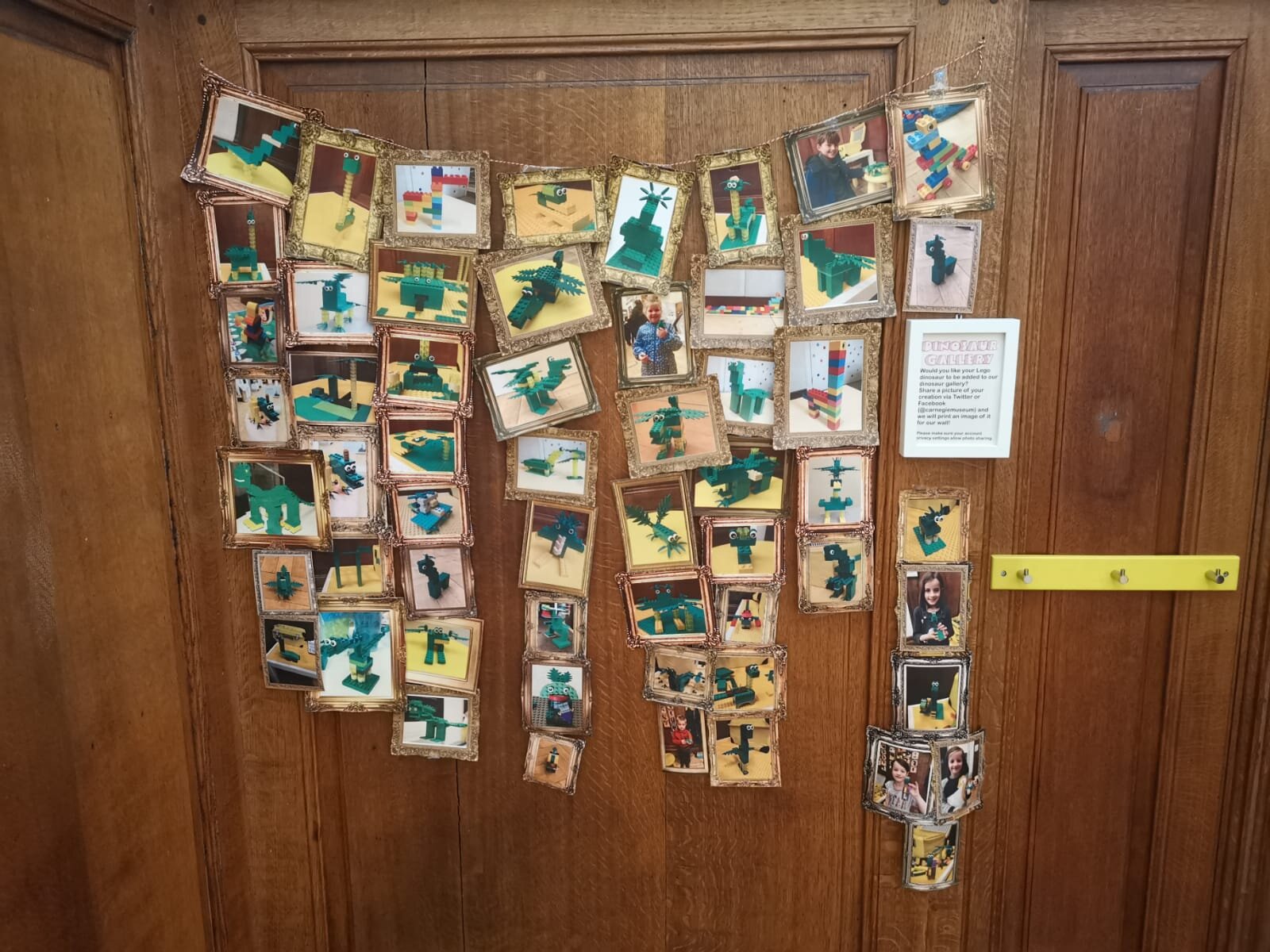
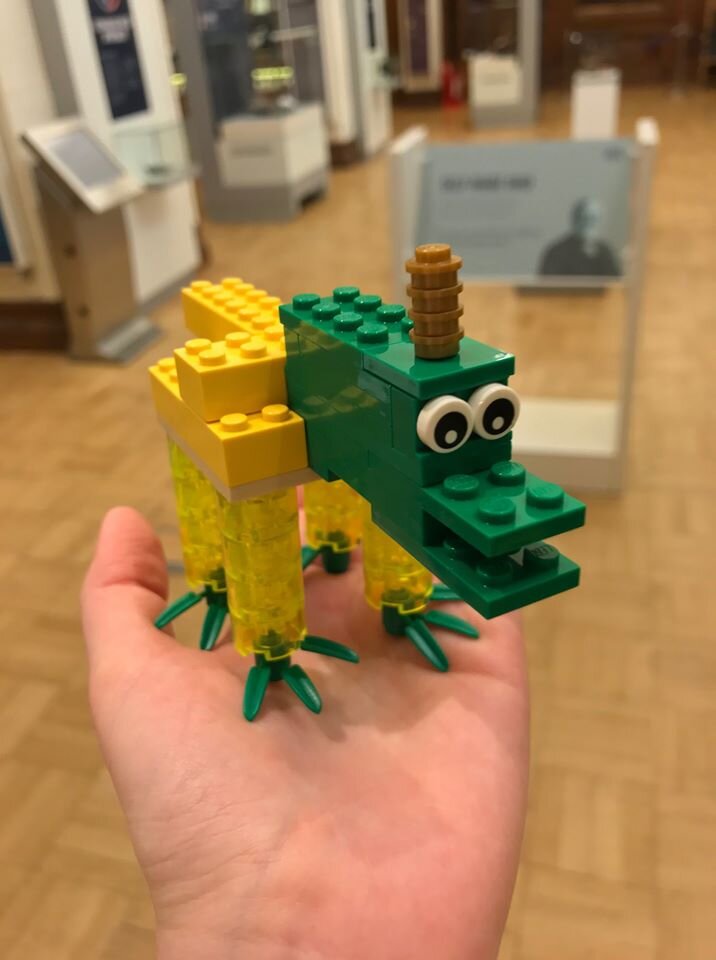
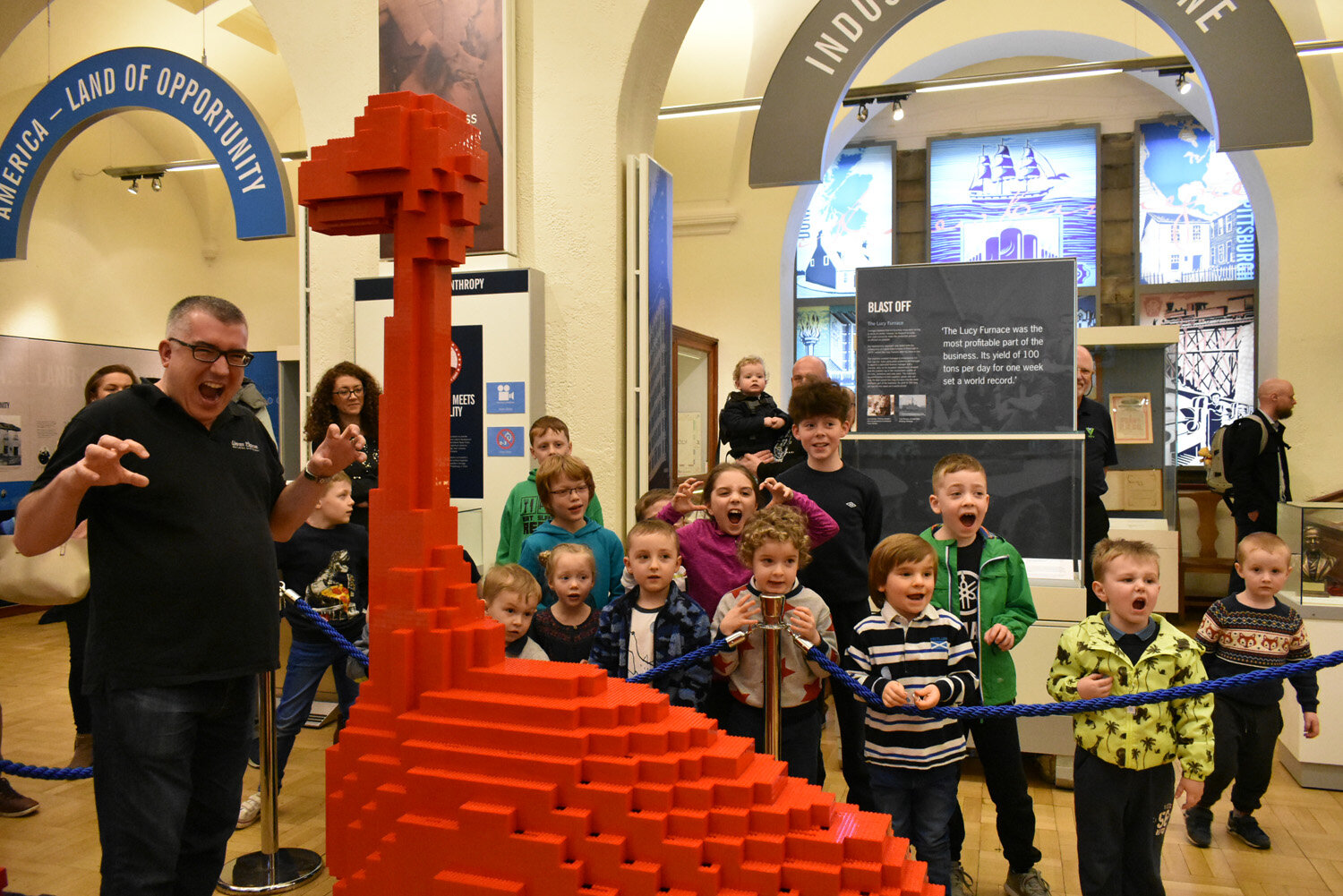
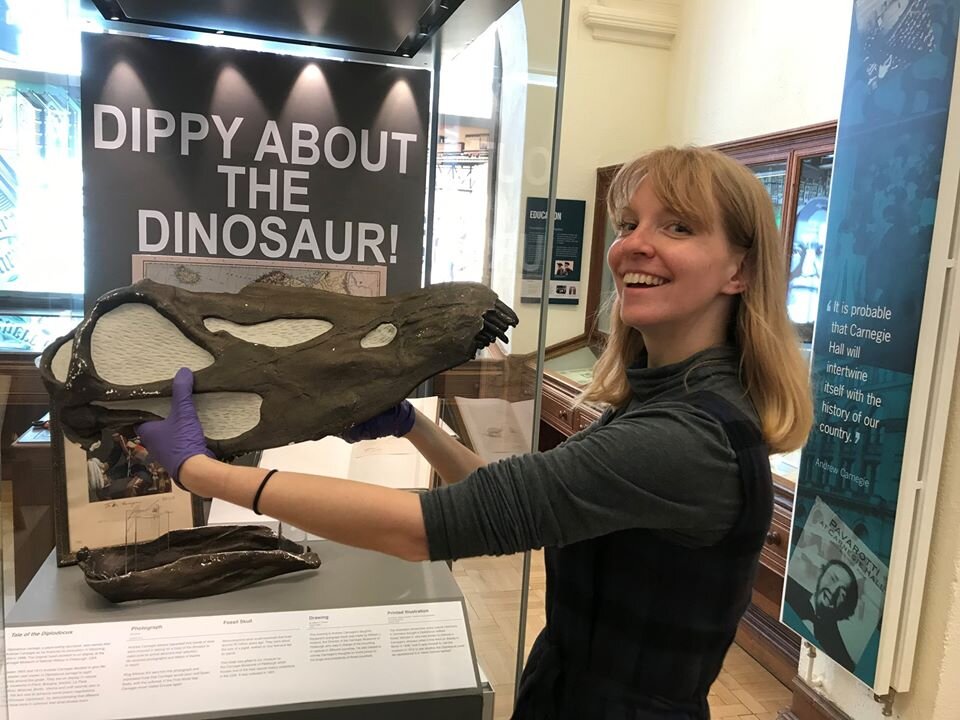
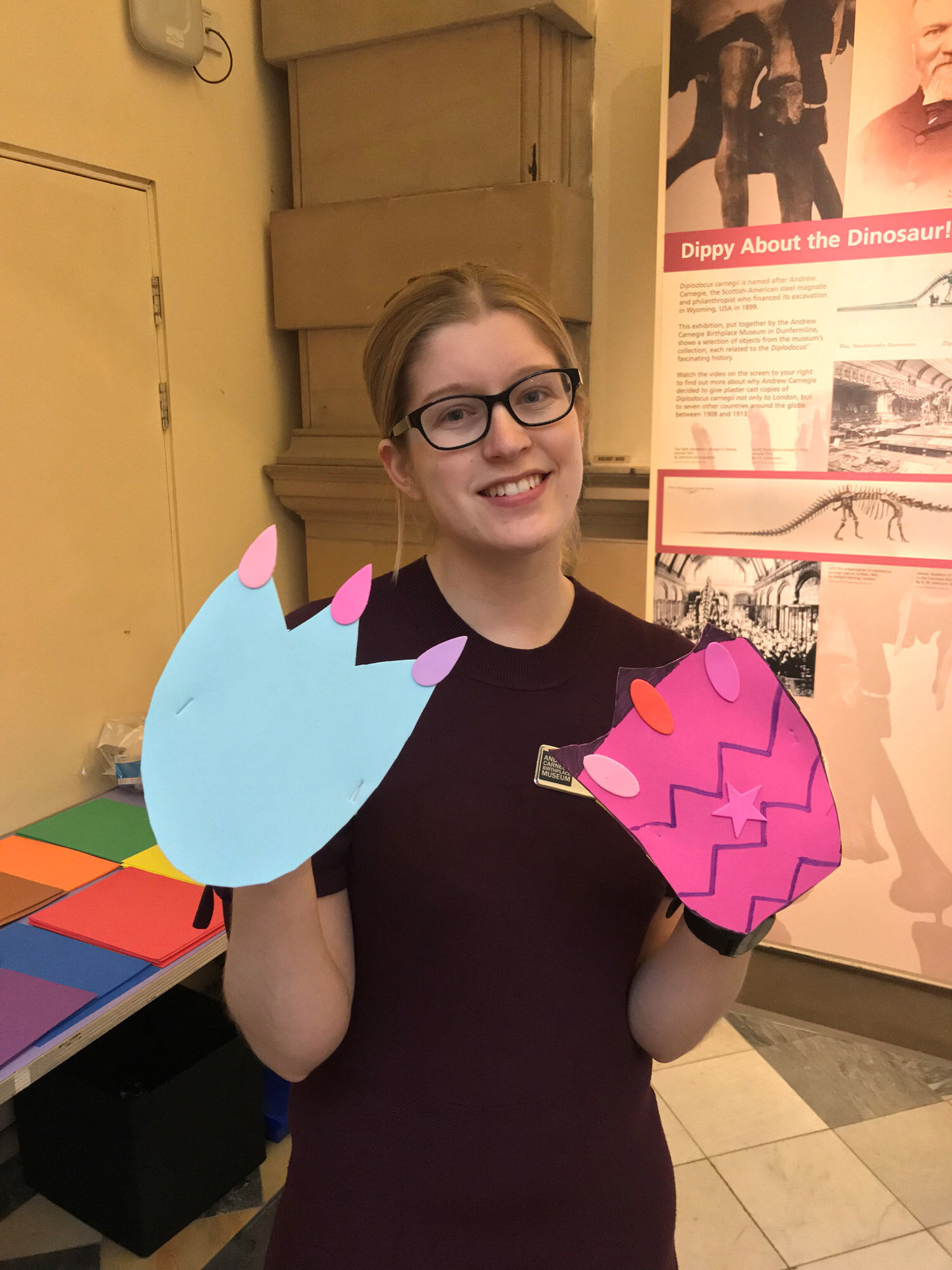
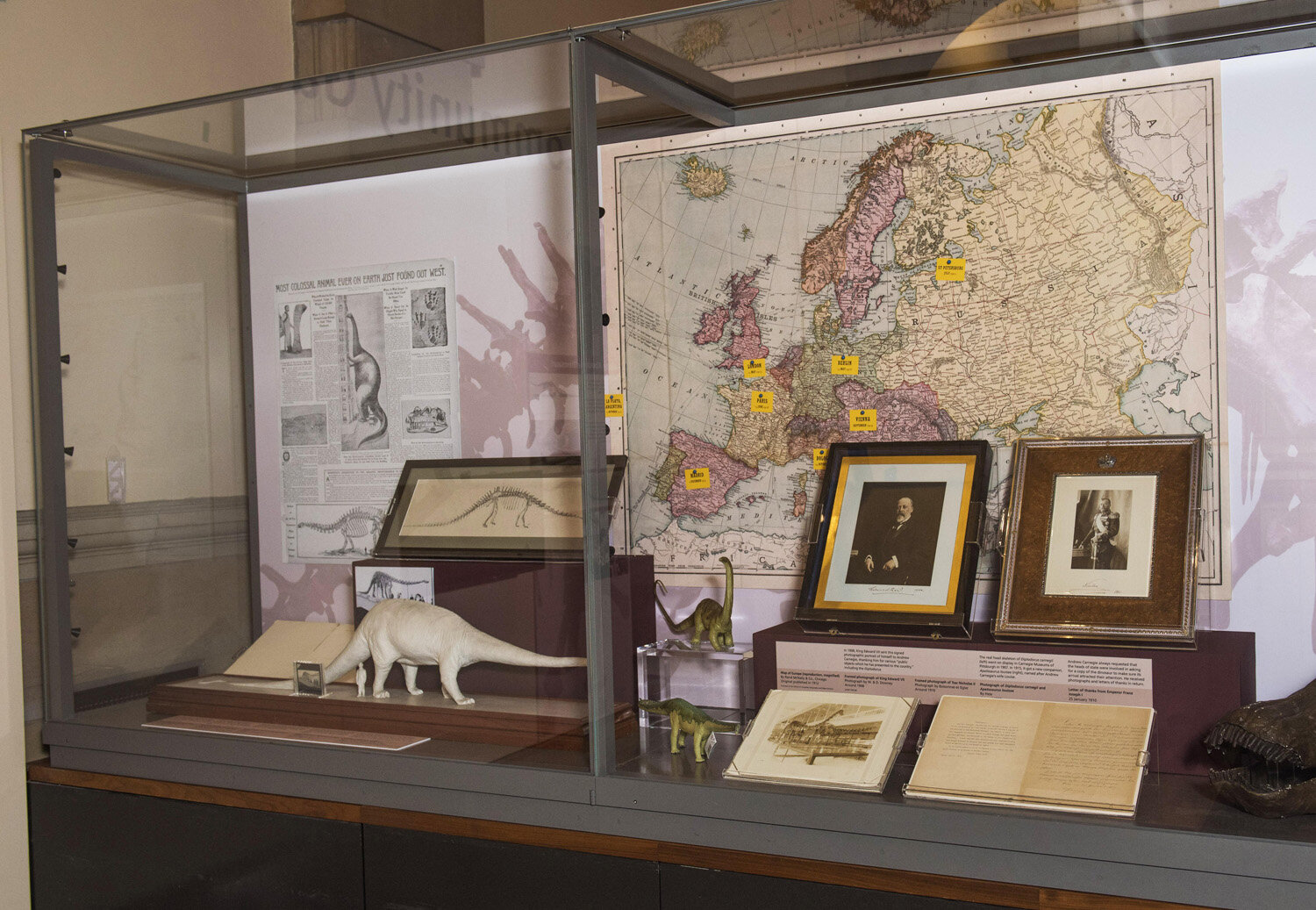
If you want to get involved with some dino-fun at home, why not try the following activities?
Go face to face with Dippy using the Natural History Museum’s 3D model.
Have you ever seen Dippy either in London or Kelvingrove? Share your experiences and memories with us!
Have a go at building a LEGO® dinosaur for our museum’s dinosaur gallery,
Create your own dinosaur bones out of things you have around the house – you could even bury them and then excavate them just like the palaeontologists in this story!
Make your own dinosaur mask – there are lots of templates online.
Don’t forget to share your wonderful creations with us either via Facebook, Instagram or Twitter!

